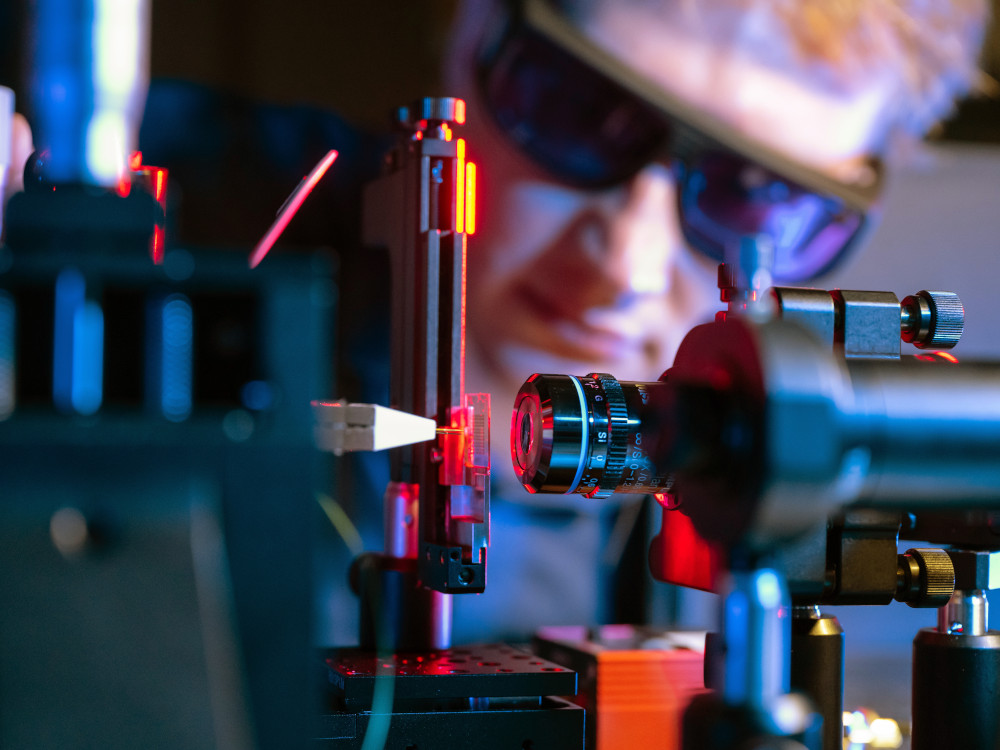
08 Apr Long haul quantum communications
The major challenge in quantum cryptography is to transmit data over long distances. In classical communication, information is encoded in many light particles and sent via optical fibres. However, the quantum-encoded information in a single light particle cannot be copied, which is why the light signal cannot be repeatedly amplified – as is the case with current communication via fibre optic cables. This means that information can only be transmitted over a distance of a few hundred kilometres.
In order to transmit information to other cities or continents, the structure of the atmosphere is to be utilised in the future. From a height of around ten kilometres, the atmosphere is so thin that light is neither scattered nor absorbed. With the help of satellites, it should be possible to carry out quantum communication over long distances.
Satellites enable quantum communication
As part of the QUICK³ mission, a research project with internationally participating researchers, Tobias Vogl, Professor of Quantum Communication Systems Engineering at the Technical University of Munich (TUM), and his team are developing a complete system with all the components needed to build a satellite for quantum communication. Vogl’s research focusses on optical quantum technologies in solid-state crystals. In particular, he is investigating fluorescent defects in the 2D material hexagonal boron nitride, which are combined with resonant nanostructures and photonic circuits in order to use them as components for quantum information processing and in quantum networks. In a first step, the team says it has tested the individual components of the satellite individually. In the next step, they want to test the entire system in space. The researchers are investigating whether the technology can withstand the conditions of space and how the individual components of the system work together.
Hybrid network for encryption
However, not all information will be transmitted this way in the future, as the process is very complex and expensive. A hybrid network in which data is encrypted either mathematically or physically is conceivable. Antonia Wachter-Zeh, Professor of Coding and Cryptography, is working on developing mathematically complex algorithms that cannot even be solved by a quantum computer. For most information, it will still be sufficient in future to encrypt the information using mathematical algorithms. Quantum cryptography will only be an option for particularly sensitive documents that are exchanged between two banks, for example.
Publication:
[Najme Ahmadi et al., QUICK3 – Design of a Satellite-Based Quantum Light Source for Quantum Communication and Extended Physical Theory Tests in Space, Adv. Quantum Technol. (2024), https://doi.org/10.1002/qute.202300343]
Source: www.tum.de
Image: Jens Meyer / Universität Jena






